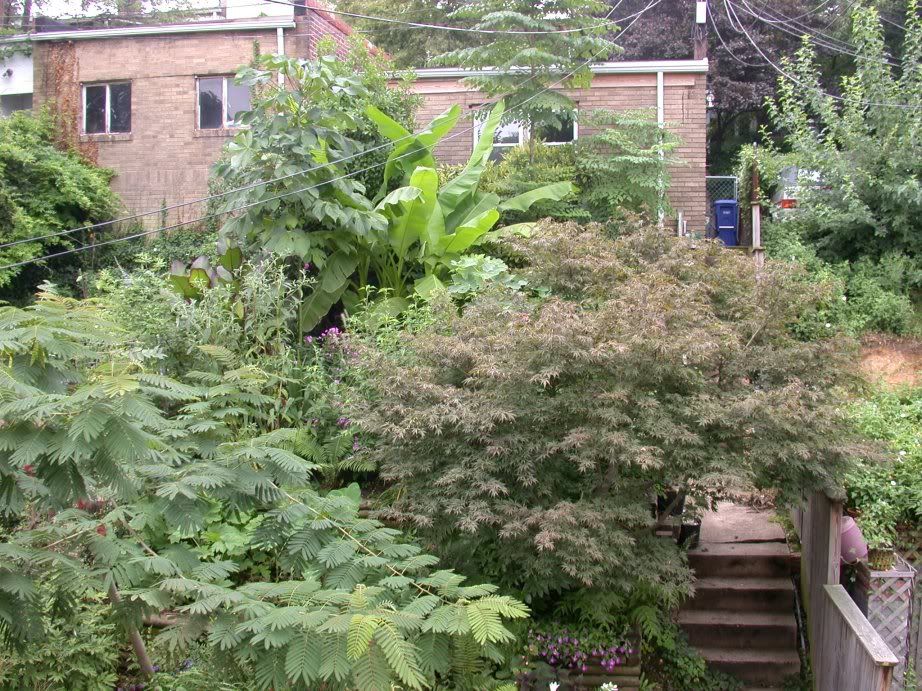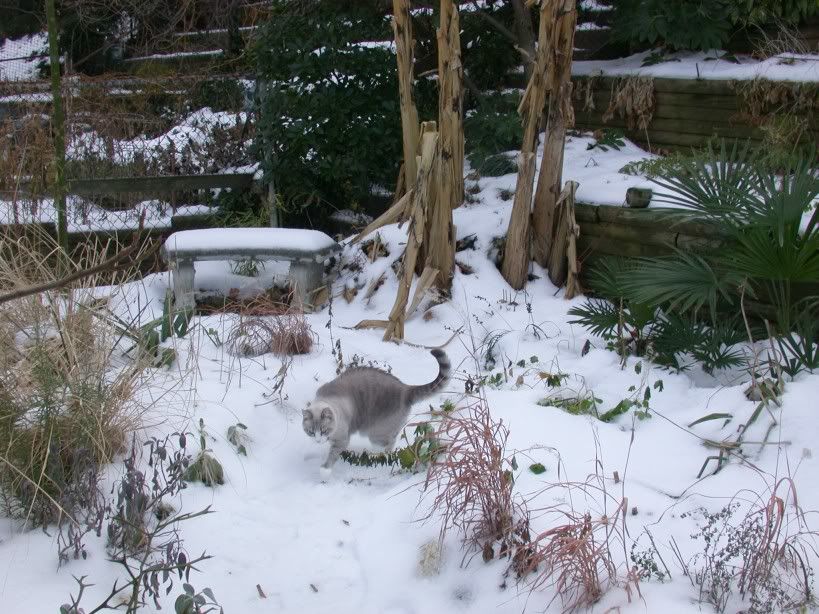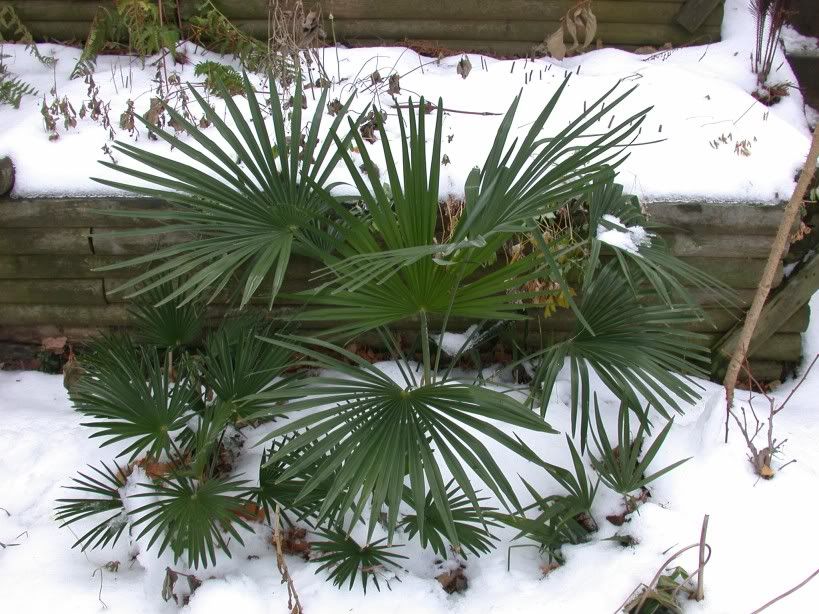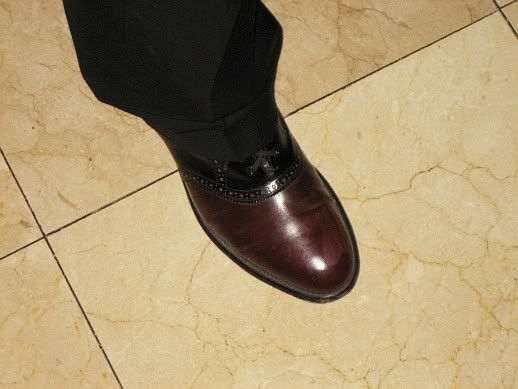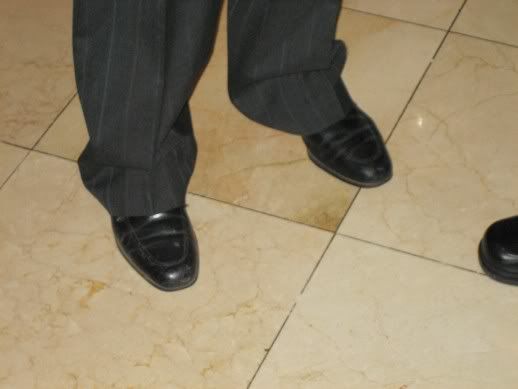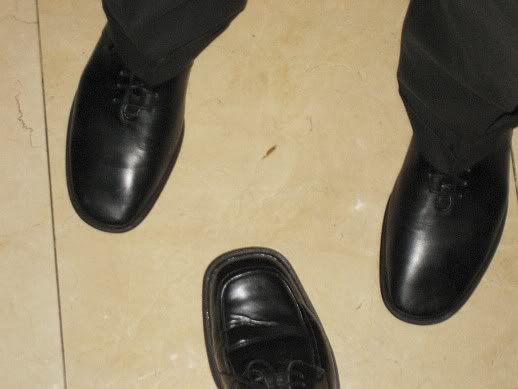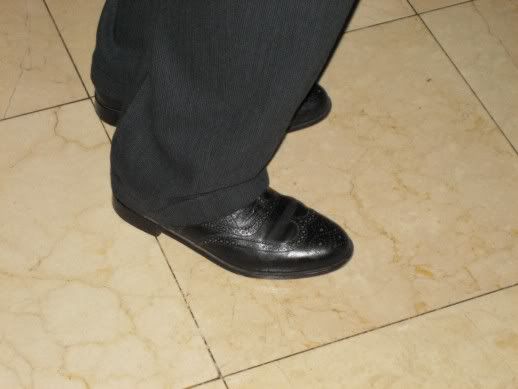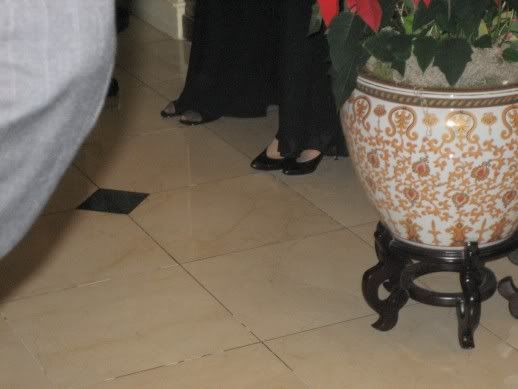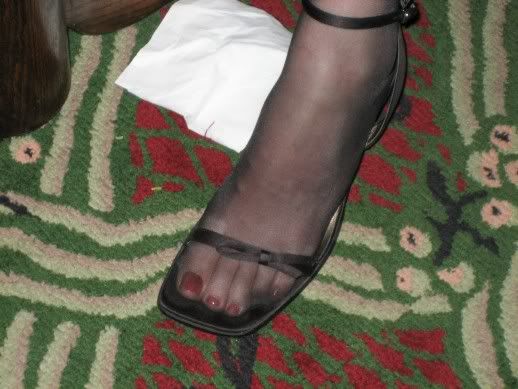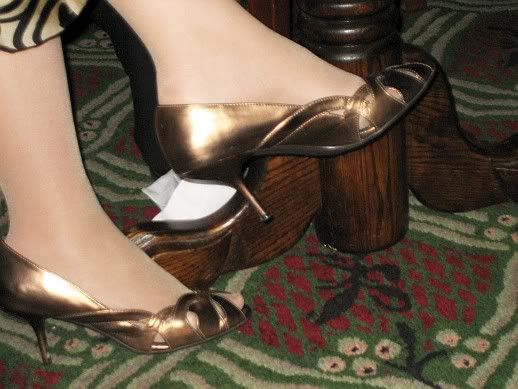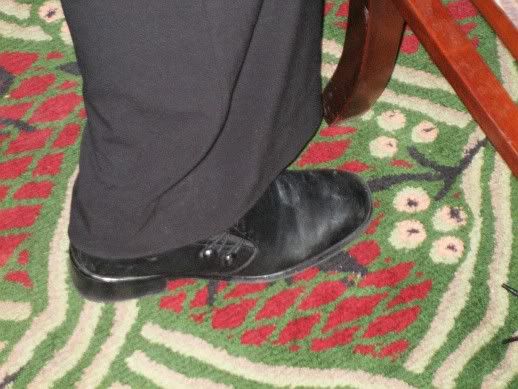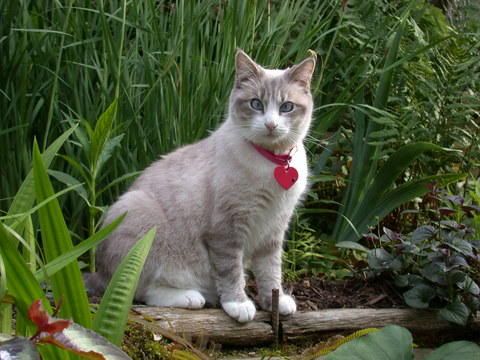Transitional Species in Insect Evolution
In "On the Origin of Species" Charles Darwin listed as one of the gravest objections to his theory the apparent paucity of intermediate or transitional forms, which he attributed (at least in part) to the imperfection of the fossil record. Well over a century later this is still being raised as an objection to evolutionary theory but such objections are increasingly misinformed as a growing number of transitional species, both living and fossil, have been found. Transitional species in the evolution of various vertebrate groups (several of which have a surprisingly good fossil record) have been discussed on the web. Recent molecular studies, combined with some truly exciting fossil discoveries, have illuminated the origins of several major kinds of animals from previously existing groups: tetrapods (4-legged land-dwelling vertebrates) from fish, birds from dinosaurs, and whales from artiodactyls (land-dwelling hoofed mammals with 4 legs) (for more information see the Transitional Vertebrate Fossils FAQ and 29+ Evidences for Macroevolution at Talk Origins). These new discoveries have largely supported hypotheses of evolutionary relationships that were previously based on morphological and other evidence, but provide a much more vivid picture of the evolution of these groups that had previously been largely hypothetical, in many cases providing concrete and compelling fossils of intermediate or transitional species between the major groups.
Similar transitions can be found in invertebrate groups such as insects. Although the origin of insects, the largest group of animals on earth, is still unclear (current evidence suggests they evolved directly from crustaceans) they have left a good fossil record during their subsequent evolution. The evolution of insects is discussed in a recent book titled, appropriately enough, Evolution of the Insects by entomologists David Grimaldi and Michael Engel. If you have any interest in insects and their evolution, this is the book for you. This is a very big and very heavy book, but it is also extremely well-illustrated with both fossils and living insects. The authors present the current state of knowledge of insect evolution as known from morphological, molecular, and fossil evidence. Grimaldi's specialty is fossil insects, particularly those preserved in amber, and the book is abundantly illustrated with diagrams and photographs of fossils, of extinct insects, and of living insects. Detailed phylogenies of all the major groups are presented, with detailed discussion of the evidence upon which those phylogenies are based. The writing is clear and not excessively technical; it should be accessible to anybody with some knowledge of basic biology and/or entomology. One of the most fascinating things I discovered in this book is that current data strongly indicate that several of the distinct, well-defined, and traditionally recognized insect orders have evolved directly from within other existing orders. Examples are Siphonaptera (fleas) from Mecoptera (scorpionflies), true lice (Phthiraptera) from the order containing barklice and booklice (Psocoptera) (with chewing lice providing a transition to sucking lice), and termites (Isoptera) from cockroaches (Blattaria). It is this last transition that I will discuss here.
The differences between cockroaches and termites are dramatic. Cockroaches are more or less omnivorous detritivores and scavengers (as witnessed by the success of several species as household pests) whereas termites eat wood, digesting its cellulose with the aid of symbiotic bacteria and protists. Cockroaches are generally solitary; termites form huge colonies of related individuals founded by a long-lived "queen" and "king". Cockroaches vary little within a species (aside from age and sexual differences); termites have a marked differentiation into winged reproductive and unwinged non-reproductive "castes" (e.g., workers and soldiers). Cockroaches have 2 pairs of wings that are different and are retained through their adult life; termites have 2 pairs of wings that are similar ("isopterous") that are shed after mating. Cockroaches and termites are as well-defined and distinct as any two orders of insects; in colloquial terms they can be considered entirely different kinds of insects. Yet there is now compelling evidence that one of these "kinds"--termites--has evolved directly from the other--cockroaches. This conclusion is both surprising and unsurprising: unsurprising in that termites have always been acknowledged on the basis of internal and external morphology to have some relationship to cockroaches and other orthopteroid orders. What is surprising, beyond the obvious differences between termites and cockroaches, is that termites have evolved from a group within the order Blattaria, and in fact are more closely related to one particular living genus of cockroaches than that genus is to all other cockroaches. In other words, termites ARE cockroaches, albeit highly modified due to their specialized lifestyle that differs from that of their ancestors.
If termites have indeed evolved from cockroaches, then we should expect to find transitional living or fossil termite-like cockroaches and cockroach-like termites. In addition, other lines of evidence should be consistent with this relationships. For example, the derived taxa (termites) should not predate their ancestors (cockroaches) in the fossil record. Moreover, the earliest members of the derived group--that is, the ones closest to the evolutionary divergence--should be the most similar to the ancestral group. Finally, the phylogenetic relationships of their symbiotic bacteria and protists, which are utterly dependent upon their hosts for survival, should be similar to the phylogenetic relationships of their hosts.
Cryptocercus, a termite-like cockroach
While termites have generally been accepted as being related to other "orthopteroid" orders, different hypotheses had argued for their closest relationship being with either cockroaches or mantids. However, on the basis of morphology and other evidence some authors have suggested a particularly close relationship between one termites and a living genus of cockroaches, Cryptercercus. While typical cockroaches in many ways, the nine species of Cryptocercus share numerous characteristics with termites.
Termite-like characteristics of Cryptocercus:
* exhibit social behavior
* live and nest exclusively in dead wood
* eat and digest wood with the aid of endosymbiotic bacteria and protists
* harbor several genera of symbiotic protists found in termites but not other cockroaches
* live long and pair monogamously (most cockroaches short-lived, mate promiscuously)
* provide parental care for nymphs
* nymphs fed by anal secretions of the adults
* symbiotic protists and bacteria passed to nymphs in anal secretions
* nymphs strikingly termite-like in appearance

Cryptocercus punctulatus adult with nymphs (from Origins of Termites)
Mastotermes, a cockroach-like termite
Are there also termites that retain cockroach-like characteristics? Yes. The Australian "giant termite" Mastotermes darwiniensis, which has long been considered one of the most primitive termites, shares several characteristics with cockroaches that are not found in other termites.
Cockroach-like characteristics of Mastotermes:
* large size (other termites are much smaller)
* expanded pronotum ("shield" on the first thoracic segment, reduced in other termites)
* hind wings with an expanded anal fan (absent in other termites)
* ovipositor present (absent in all other termites)
* eggs laid in oothecae (clusters in a membrane-enclosed capsule; other termites lay solitary eggs)
* feet with 5 tarsal segments (all other termites have 4)
* harbor endosymbiotic bacterium Blattabacterium, a genus found in cockroaches but not other termites
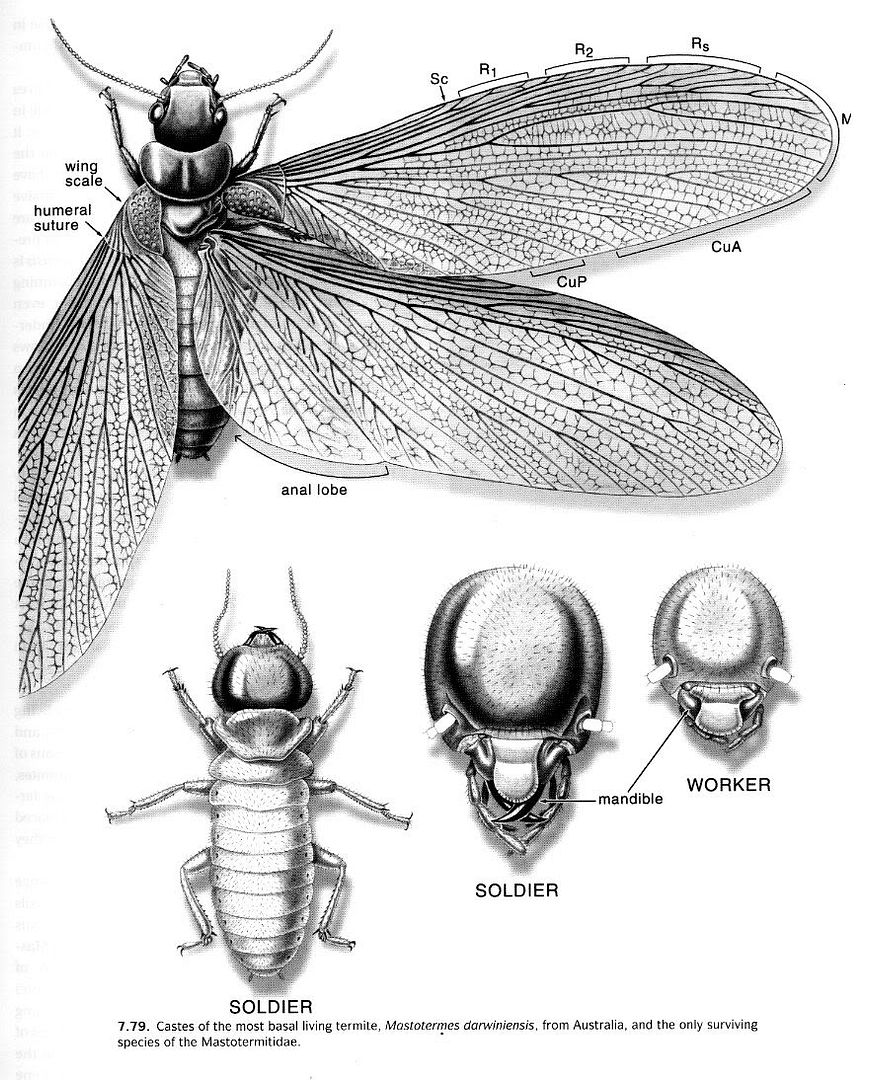
Mastotermes darwiniensis, a cockroach-like termite (from Evolution of Insects)
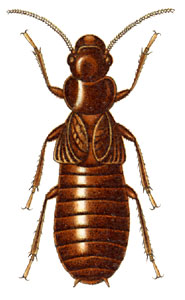
Mastotermes darwiniensis, female reproductive after shedding wings (from Tree of Life)

Mastotermes darwiniensis nymphs, workers and soldier (from Termites as Structural Pests)
Evolution of termites from cockroaches
The molecular, morphological, behavioral and endosymbiont data show that the evolution of termites from cockroaches, while seemingly rapid in geological terms, has gone through several stages, with "typical" termite characteristics being acquired stepwise:
Stage 1: primitive roaches with long ovipositors (earliest roach-like fossils);
Stage 2: ovipositor shortened; typical cockroaches (plenty of those still around);
Stage 3: wood-dwelling cockroaches that mate monogamously, care for their nymphs, and can eat and digest wood. (Represented by the living genus Crytocercus);
Stage 4: development of a true social lifestyle with a caste system consisting of a reproductive "queen" and "king" and sexually suppressed nymphs differentiated into non-reproductive workers and soldiers; acquisition of some "typical" termite characteristics (e.g., forewings membranous and wings shed after mating). (Represented by the living genus Mastotermes);
Stage 5: acquisition of more typical termite characteristics (e.g., ovipositor lost, eggs laid singly, hing wings lose their anal fan, all 4 wings "isopterous"); represented by all other living termites.
Note that the genus Cryptocercus can NOT be considered directly ancestral to termites, as it has specializations of its own (e.g., loss of wings). This is to be expected as the lineage leading to Cryptocercus has had a long evolutionary history of its own since it diverged from the common ancestor with termites, and continued to evolve independently after that divergence. However, the termite-like characteristics of Cryptocercus and cockroach-like characteristics of Mastotermes demonstrate that evolution of termites from cockroaches has been relatively gradual, has occurred stepwise by a progressive loss of cockroach characteristics and accumulation of termite characteristics, and has left evidence of this evolution in the surviving descendants of at least two transitional species that occurred along the way.
Fossil record
Grimaldi & Engel place the first appearance of true cockroaches in the fossil record as early Cretaceous, and termites at about the same time. Although appearing at about the same time in the fossil record, the Cretaceous termite fossils belong to the primitive (although still extant) families Mastotermitidae, Hodotermitidae, and Termopsidae. However, the earliest cockroach fossils are already diverse and represent several modern families, suggesting a much earlier origin and evolutionary divergence. This earlier origin is also suggested by "roachoid" fossils that occur from the Carboniferous into the Jurassic. Although it is often claimed that cockroaches first appeared in the Paleozoic era in more or less modern form and have changed little since, these early "roaches", dubbed "roachoids" by Grimaldi, while similar to cockroaches general appearance and sharing many characters with them, differ in having elongate ovipositors more like those found in the closely related order Orthoptera, rather than the reduced ovipositors of cockroaches (and Mastotermes)--in other words, they comprise an entirely different set of transitional species between primitive orthopterans and true cockroaches. Some of these "roachoid" fossils are so roachlike that the difference is little more than semantic, and there can be little doubt that modern cockroaches evolved directly from one of the "roachoid" lineages sometime during the Jurassic. The discovery of trace fossils interpreted as termite nests in the early Jurassic also suggests that the evolution of both true cockroaches and termites may have occurred considerably earlier than the Cretaceous although this is consistent with both the appearance of diverse cockroach and termite body fossils in the early Cretaceous, as well as the occurrence of "roachoid" fossils into the Jurassic.

A Carboniferous "roachoid" (from LARGEST FOSSIL COCKROACH FOUND)
Molecular evidence
Molecular phylogenies have supported morphological and other evidence (e.g., social behavior) in showing that Cryptocercus is more closely related to termites than it is to other cockroaches, and that Mastotermes is primitive with respect to all other termites. An interesting test of the phylogenetic relationships between cockroaches and termites is the phylogenetic relationships of their symbionts. As stated above, there is a strongly suggestive overlap of symbiotic protists and bacteria between cockroaches, Cryptocercus, Mastotermes, and other termites. These bacteria and protists are incapable of living apart from their hosts, and are passed from one generation of hosts to the next via anal secretions. Their utter dependence upon their hosts means that they have evolved in parallel with their hosts, and indeed the molecular phylogenies of the symbionts have proven to almost perfectly parallel the host phylogeny: the symbionts of Mastotermes and other termites are most closely related, are next most closely related to the symbionts of Cryptocercus, and are next most closely related to those of other cockroaches.
Summary
1. Cryptocercus is a cockroach with social characteristics of termites.
2. Cryptocercus shares endosymbionts with termites that are not shared with other cockroaches.
3. Molecular evidence shows that Cryptocercus is more closely related to termites than it is to other cockroaches.
4. Molecular evidence shows that the endosymbionts of Cryptocercus are more closely related to those of termites than to those of other cockroaches.
5. Mastotermes is a termite with numerous morphological characteristics of cockroaches that are not shared with other termites.
6. Mastotermes shares certain endosymbionts with cockroaches that are not found in other termites.
6. Molecular evidence shows that Mastotermes is primitive with respect to other termites.
7. The oldest termite fossils belong to Mastotermitidae and other primitive families.
Creationists might make the typical claim that "Cryptocercus is still just a cockroach, and Mastotermes is just a termite" but this would be a gross oversimplification that conveniently ignores the evidence. It does not address why Cryptocercus has so many termite-like characteristics, and Mastotermes has so many cockroach-like characteristics, when the molecular evidence indicates that Cryptocercus is the closest living relative of termites, that Mastotermes is the most primitive living termite, and even the relationships of their endosymbionts support this relationship. In other words, the data from several different kinds of evidence point toward the conclusion that termites evolved directly from cockroaches. Taken individually these data could be argued or interpreted in different ways; taken together they point to the unavoidable conclusion that, as Grimaldi says in a review of insect evolution, "Termites are highly modified, social, myopic, wood-eating roaches."
References available on the web (in no particular order):
Colony composition, social behavior and some ecological characteristics of the Korean wood-feeding cockroach (Cryptocercus kyebangensis)
Origins of Termites
Termites and trees: a review of recent advances in termite phylogenetics
Evidence from multiple gene sequences indicates that termites evolved from wood-feeding cockroaches
Phylogeny of Mantodea based on molecular data: evolution of a charismatic predator (supports paraphyly of roaches with respect to termites)
Mantophasmatodea and phylogeny of the lower neopterous insects
Insect evolutionary history from Handlirsch to Hennig, and beyond
Evidence for Cocladogenesis Between Diverse Dictyopteran Lineages and Their Intracellular Endosymbionts
Advanced early Jurassic termite (Insecta: Isoptera) nests: evidence from the Clarens Formation in the Tuli Basin, southern Africa.
Similar transitions can be found in invertebrate groups such as insects. Although the origin of insects, the largest group of animals on earth, is still unclear (current evidence suggests they evolved directly from crustaceans) they have left a good fossil record during their subsequent evolution. The evolution of insects is discussed in a recent book titled, appropriately enough, Evolution of the Insects by entomologists David Grimaldi and Michael Engel. If you have any interest in insects and their evolution, this is the book for you. This is a very big and very heavy book, but it is also extremely well-illustrated with both fossils and living insects. The authors present the current state of knowledge of insect evolution as known from morphological, molecular, and fossil evidence. Grimaldi's specialty is fossil insects, particularly those preserved in amber, and the book is abundantly illustrated with diagrams and photographs of fossils, of extinct insects, and of living insects. Detailed phylogenies of all the major groups are presented, with detailed discussion of the evidence upon which those phylogenies are based. The writing is clear and not excessively technical; it should be accessible to anybody with some knowledge of basic biology and/or entomology. One of the most fascinating things I discovered in this book is that current data strongly indicate that several of the distinct, well-defined, and traditionally recognized insect orders have evolved directly from within other existing orders. Examples are Siphonaptera (fleas) from Mecoptera (scorpionflies), true lice (Phthiraptera) from the order containing barklice and booklice (Psocoptera) (with chewing lice providing a transition to sucking lice), and termites (Isoptera) from cockroaches (Blattaria). It is this last transition that I will discuss here.
The differences between cockroaches and termites are dramatic. Cockroaches are more or less omnivorous detritivores and scavengers (as witnessed by the success of several species as household pests) whereas termites eat wood, digesting its cellulose with the aid of symbiotic bacteria and protists. Cockroaches are generally solitary; termites form huge colonies of related individuals founded by a long-lived "queen" and "king". Cockroaches vary little within a species (aside from age and sexual differences); termites have a marked differentiation into winged reproductive and unwinged non-reproductive "castes" (e.g., workers and soldiers). Cockroaches have 2 pairs of wings that are different and are retained through their adult life; termites have 2 pairs of wings that are similar ("isopterous") that are shed after mating. Cockroaches and termites are as well-defined and distinct as any two orders of insects; in colloquial terms they can be considered entirely different kinds of insects. Yet there is now compelling evidence that one of these "kinds"--termites--has evolved directly from the other--cockroaches. This conclusion is both surprising and unsurprising: unsurprising in that termites have always been acknowledged on the basis of internal and external morphology to have some relationship to cockroaches and other orthopteroid orders. What is surprising, beyond the obvious differences between termites and cockroaches, is that termites have evolved from a group within the order Blattaria, and in fact are more closely related to one particular living genus of cockroaches than that genus is to all other cockroaches. In other words, termites ARE cockroaches, albeit highly modified due to their specialized lifestyle that differs from that of their ancestors.
If termites have indeed evolved from cockroaches, then we should expect to find transitional living or fossil termite-like cockroaches and cockroach-like termites. In addition, other lines of evidence should be consistent with this relationships. For example, the derived taxa (termites) should not predate their ancestors (cockroaches) in the fossil record. Moreover, the earliest members of the derived group--that is, the ones closest to the evolutionary divergence--should be the most similar to the ancestral group. Finally, the phylogenetic relationships of their symbiotic bacteria and protists, which are utterly dependent upon their hosts for survival, should be similar to the phylogenetic relationships of their hosts.
Cryptocercus, a termite-like cockroach
While termites have generally been accepted as being related to other "orthopteroid" orders, different hypotheses had argued for their closest relationship being with either cockroaches or mantids. However, on the basis of morphology and other evidence some authors have suggested a particularly close relationship between one termites and a living genus of cockroaches, Cryptercercus. While typical cockroaches in many ways, the nine species of Cryptocercus share numerous characteristics with termites.
Termite-like characteristics of Cryptocercus:
* exhibit social behavior
* live and nest exclusively in dead wood
* eat and digest wood with the aid of endosymbiotic bacteria and protists
* harbor several genera of symbiotic protists found in termites but not other cockroaches
* live long and pair monogamously (most cockroaches short-lived, mate promiscuously)
* provide parental care for nymphs
* nymphs fed by anal secretions of the adults
* symbiotic protists and bacteria passed to nymphs in anal secretions
* nymphs strikingly termite-like in appearance

Cryptocercus punctulatus adult with nymphs (from Origins of Termites)
Mastotermes, a cockroach-like termite
Are there also termites that retain cockroach-like characteristics? Yes. The Australian "giant termite" Mastotermes darwiniensis, which has long been considered one of the most primitive termites, shares several characteristics with cockroaches that are not found in other termites.
Cockroach-like characteristics of Mastotermes:
* large size (other termites are much smaller)
* expanded pronotum ("shield" on the first thoracic segment, reduced in other termites)
* hind wings with an expanded anal fan (absent in other termites)
* ovipositor present (absent in all other termites)
* eggs laid in oothecae (clusters in a membrane-enclosed capsule; other termites lay solitary eggs)
* feet with 5 tarsal segments (all other termites have 4)
* harbor endosymbiotic bacterium Blattabacterium, a genus found in cockroaches but not other termites

Mastotermes darwiniensis, a cockroach-like termite (from Evolution of Insects)

Mastotermes darwiniensis, female reproductive after shedding wings (from Tree of Life)

Mastotermes darwiniensis nymphs, workers and soldier (from Termites as Structural Pests)
Evolution of termites from cockroaches
The molecular, morphological, behavioral and endosymbiont data show that the evolution of termites from cockroaches, while seemingly rapid in geological terms, has gone through several stages, with "typical" termite characteristics being acquired stepwise:
Stage 1: primitive roaches with long ovipositors (earliest roach-like fossils);
Stage 2: ovipositor shortened; typical cockroaches (plenty of those still around);
Stage 3: wood-dwelling cockroaches that mate monogamously, care for their nymphs, and can eat and digest wood. (Represented by the living genus Crytocercus);
Stage 4: development of a true social lifestyle with a caste system consisting of a reproductive "queen" and "king" and sexually suppressed nymphs differentiated into non-reproductive workers and soldiers; acquisition of some "typical" termite characteristics (e.g., forewings membranous and wings shed after mating). (Represented by the living genus Mastotermes);
Stage 5: acquisition of more typical termite characteristics (e.g., ovipositor lost, eggs laid singly, hing wings lose their anal fan, all 4 wings "isopterous"); represented by all other living termites.
Note that the genus Cryptocercus can NOT be considered directly ancestral to termites, as it has specializations of its own (e.g., loss of wings). This is to be expected as the lineage leading to Cryptocercus has had a long evolutionary history of its own since it diverged from the common ancestor with termites, and continued to evolve independently after that divergence. However, the termite-like characteristics of Cryptocercus and cockroach-like characteristics of Mastotermes demonstrate that evolution of termites from cockroaches has been relatively gradual, has occurred stepwise by a progressive loss of cockroach characteristics and accumulation of termite characteristics, and has left evidence of this evolution in the surviving descendants of at least two transitional species that occurred along the way.
Fossil record
Grimaldi & Engel place the first appearance of true cockroaches in the fossil record as early Cretaceous, and termites at about the same time. Although appearing at about the same time in the fossil record, the Cretaceous termite fossils belong to the primitive (although still extant) families Mastotermitidae, Hodotermitidae, and Termopsidae. However, the earliest cockroach fossils are already diverse and represent several modern families, suggesting a much earlier origin and evolutionary divergence. This earlier origin is also suggested by "roachoid" fossils that occur from the Carboniferous into the Jurassic. Although it is often claimed that cockroaches first appeared in the Paleozoic era in more or less modern form and have changed little since, these early "roaches", dubbed "roachoids" by Grimaldi, while similar to cockroaches general appearance and sharing many characters with them, differ in having elongate ovipositors more like those found in the closely related order Orthoptera, rather than the reduced ovipositors of cockroaches (and Mastotermes)--in other words, they comprise an entirely different set of transitional species between primitive orthopterans and true cockroaches. Some of these "roachoid" fossils are so roachlike that the difference is little more than semantic, and there can be little doubt that modern cockroaches evolved directly from one of the "roachoid" lineages sometime during the Jurassic. The discovery of trace fossils interpreted as termite nests in the early Jurassic also suggests that the evolution of both true cockroaches and termites may have occurred considerably earlier than the Cretaceous although this is consistent with both the appearance of diverse cockroach and termite body fossils in the early Cretaceous, as well as the occurrence of "roachoid" fossils into the Jurassic.

A Carboniferous "roachoid" (from LARGEST FOSSIL COCKROACH FOUND)
Molecular evidence
Molecular phylogenies have supported morphological and other evidence (e.g., social behavior) in showing that Cryptocercus is more closely related to termites than it is to other cockroaches, and that Mastotermes is primitive with respect to all other termites. An interesting test of the phylogenetic relationships between cockroaches and termites is the phylogenetic relationships of their symbionts. As stated above, there is a strongly suggestive overlap of symbiotic protists and bacteria between cockroaches, Cryptocercus, Mastotermes, and other termites. These bacteria and protists are incapable of living apart from their hosts, and are passed from one generation of hosts to the next via anal secretions. Their utter dependence upon their hosts means that they have evolved in parallel with their hosts, and indeed the molecular phylogenies of the symbionts have proven to almost perfectly parallel the host phylogeny: the symbionts of Mastotermes and other termites are most closely related, are next most closely related to the symbionts of Cryptocercus, and are next most closely related to those of other cockroaches.
Summary
1. Cryptocercus is a cockroach with social characteristics of termites.
2. Cryptocercus shares endosymbionts with termites that are not shared with other cockroaches.
3. Molecular evidence shows that Cryptocercus is more closely related to termites than it is to other cockroaches.
4. Molecular evidence shows that the endosymbionts of Cryptocercus are more closely related to those of termites than to those of other cockroaches.
5. Mastotermes is a termite with numerous morphological characteristics of cockroaches that are not shared with other termites.
6. Mastotermes shares certain endosymbionts with cockroaches that are not found in other termites.
6. Molecular evidence shows that Mastotermes is primitive with respect to other termites.
7. The oldest termite fossils belong to Mastotermitidae and other primitive families.
Creationists might make the typical claim that "Cryptocercus is still just a cockroach, and Mastotermes is just a termite" but this would be a gross oversimplification that conveniently ignores the evidence. It does not address why Cryptocercus has so many termite-like characteristics, and Mastotermes has so many cockroach-like characteristics, when the molecular evidence indicates that Cryptocercus is the closest living relative of termites, that Mastotermes is the most primitive living termite, and even the relationships of their endosymbionts support this relationship. In other words, the data from several different kinds of evidence point toward the conclusion that termites evolved directly from cockroaches. Taken individually these data could be argued or interpreted in different ways; taken together they point to the unavoidable conclusion that, as Grimaldi says in a review of insect evolution, "Termites are highly modified, social, myopic, wood-eating roaches."
References available on the web (in no particular order):
Colony composition, social behavior and some ecological characteristics of the Korean wood-feeding cockroach (Cryptocercus kyebangensis)
Origins of Termites
Termites and trees: a review of recent advances in termite phylogenetics
Evidence from multiple gene sequences indicates that termites evolved from wood-feeding cockroaches
Phylogeny of Mantodea based on molecular data: evolution of a charismatic predator (supports paraphyly of roaches with respect to termites)
Mantophasmatodea and phylogeny of the lower neopterous insects
Insect evolutionary history from Handlirsch to Hennig, and beyond
Evidence for Cocladogenesis Between Diverse Dictyopteran Lineages and Their Intracellular Endosymbionts
Advanced early Jurassic termite (Insecta: Isoptera) nests: evidence from the Clarens Formation in the Tuli Basin, southern Africa.

